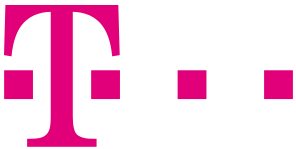Safety Detective’s Aviva Zacks sat with Brian Vecci, Field CTO of Varonis, and asked him about his company’s products and how they quickly resolve security incidents.
Safety Detective: What was your journey to cybersecurity and what do you love about it?
Brian Vecci: I spent fifteen years after college working as a developer, product manager, project manager, and systems architect. In the early years, I was doing both development and IT work in various roles and learned a lot about enterprise technology and how it relates to how an organization works—I honestly believe anyone in IT and Security should probably spend some time on a help desk. When it’s your job to diagnose and fix IT problems, you learn a lot about how things work and how various systems fit together (or don’t). You also learn why things break and why some fixes won’t work at scale without automation.
I joined Varonis in 2010 and have been fortunate enough to serve in a variety of roles as our platform and customer base has grown. I’ve also seen the cybersecurity landscape change dramatically in the last ten years, and what I love most about my role now is that every day is a new challenge. I sit at the intersection between technology, a growing business, a rapidly changing market, and a diverse and growing customer base, which lets me be creative in new ways every day.
SD: Tell me what Varonis does.
BV: One of the big advantages Varonis has is that all of our products are part of a single code base and platform, so everything is tightly integrated. Varonis continuously collects and analyzes data from data stores and supporting infrastructure—file servers and NAS, cloud data in Office 365 and Box, email on Exchange and Active Directory on-prem and in Azure—and is designed make sure sensitive data is where it’s supposed to be and not exposed to the wrong people, that PII and other regulated data are kept private and companies can prove they are compliant, and that modern threats like cybercriminals, APTs, malicious insiders, and malware like ransomware are quickly detected and incidents are quickly resolved. The platform is unique in how we collect, combine, and analyze different sources of data and in our ability to safely affect change at scale. Varonis not only highlights risk, but we can also fix the problems we find.
SD: What verticals use your product and why?
BV: The short answer is that any organization with data can benefit from Varonis since the problems we solve are universal. Everyone from hospitals to banks to government agencies to law firms has more data than they can manage, risks that they don’t know about, and exposure to cyberattacks and insider threats. That said, highly regulated industries like finance and healthcare often have regulatory needs that Varonis can address at scale with automation in a fraction of the time it typically takes to perform by hand. We have customers of every size and in every vertical. When we do a risk assessment, it’s always surprising what we find that the CISO didn’t know about.
SD: What is the worst cyberthreat out there today?
BV: The ones that are already inside. Most cyberattacks are either directly caused by insiders or involve the hijacking of an insider’s credentials to do damage. The biggest problem every organization faces is that too much data—especially sensitive data—is open to too many people. That’s a problem for data protection, obviously, but also a huge compliance headache and, most importantly, means that the attack surface for any cyberattack is far larger than organizations realize. Addressing the insider threat by making sure that all data is locked down to only those who need it and everything is monitored in a useful way goes a long way to addressing most attacks.
SD: How will the COVID-19 pandemic change the cybersecurity landscape?
BV: We’re now in a world where every user is expected to be able to access all of their data from any device, anywhere, and at any time. We were moving in this direction already, but COVID-19 accelerated the transition and a lot of companies weren’t ready. Now that companies have gotten past the big hurdles—making sure everyone can at least get to work from home—organizations are now facing the security challenges that come along with it. Instead of five office locations that need securing, one of our customers is now dealing with 1,500 users all working from home. That’s 1,500 networks with insecure devices on them that are gateways into that organization’s data. Treating this model as the new normal means you need to assume every user and every device is a potential threat—zero trust—and put the right controls in place to prevent disaster. Varonis is fortunate that our platform was built to support this model already, and now we’re helping folks make this transition safely and successfully.
Source of Article



